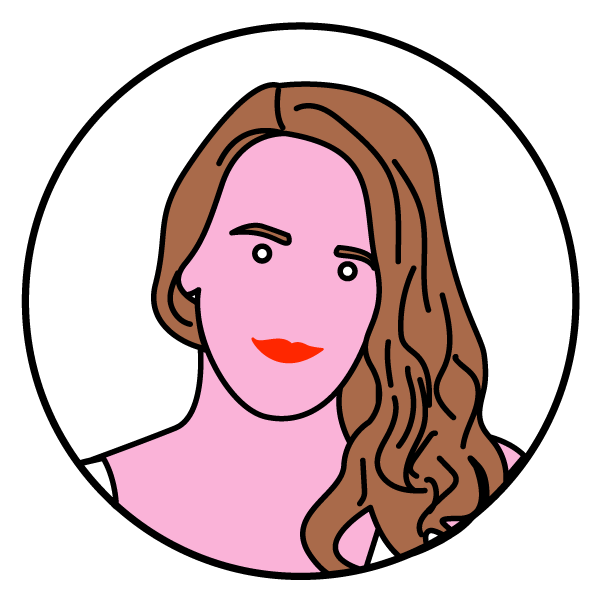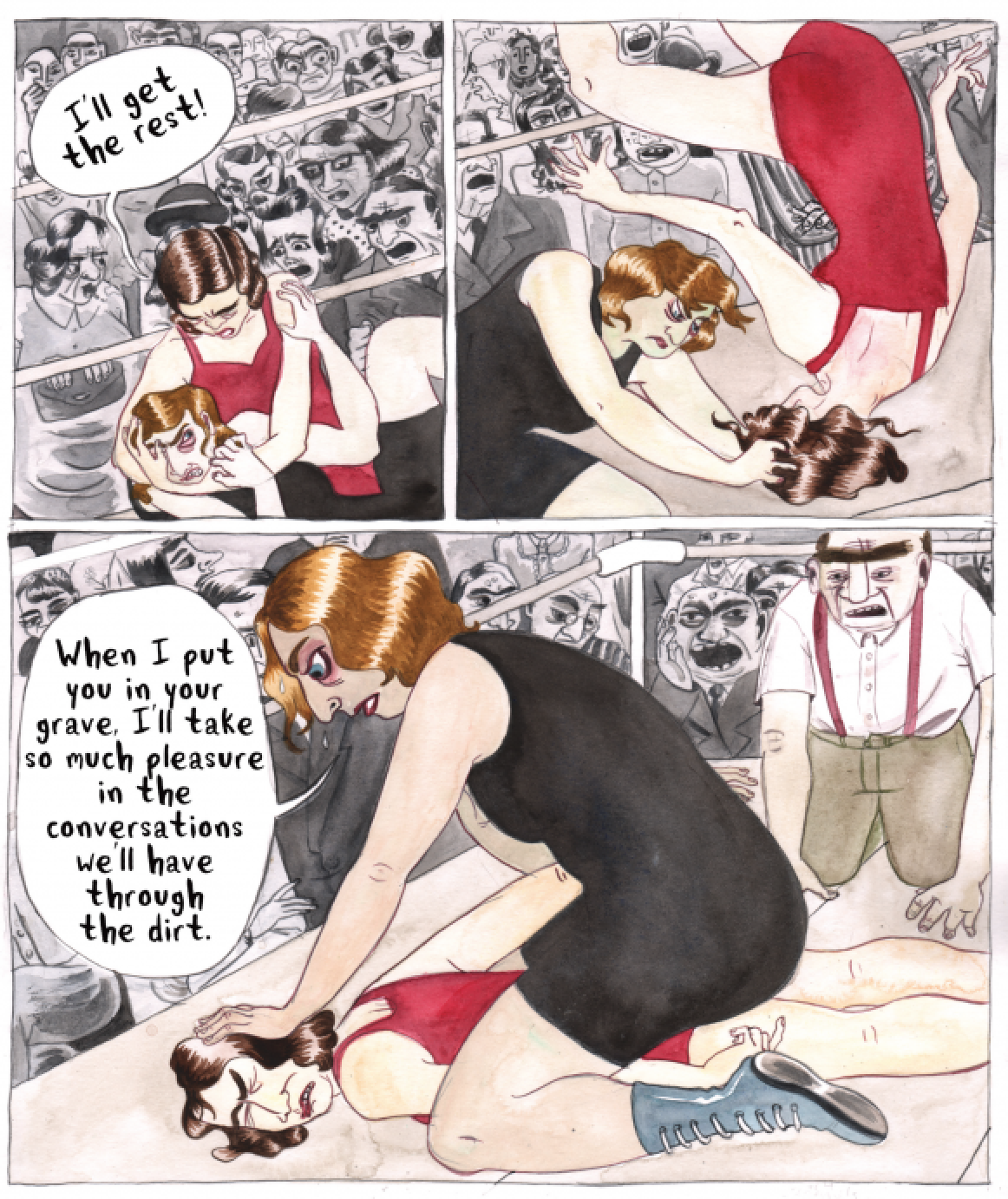
Nobody draws figures quite like Leela Corman—radical and hyper-stylized, her characters belong to a different, more beautiful world than the one we inhabit. Here, she discusses the making of “Kraut,” a graphic narrative about ghosts, trauma, and women’s wrestling after World War II.
—Kristen Radtke
THE BELIEVER: How did this comic start?
LEELA CORMAN: Its beginnings were a little nebulous. At some point I began to get interested in images of women working in war industries during WWII, in the US. I started collecting them, and thinking about setting a comic amongst them. This must have been when I was pregnant with my second daughter, because I have a memory of discussing this idea with someone about a week before she was born. The rest kind of snowballed as I put my attention on it. I honestly cannot tell you how my teenaged Jewish refugee character became a wrestler. But once a process like this begins, this is the kind of alchemy that takes place. Characters start appearing, and they tell you who they are. “I’m a refugee with PTSD and I fucking wrestle, draw me.”
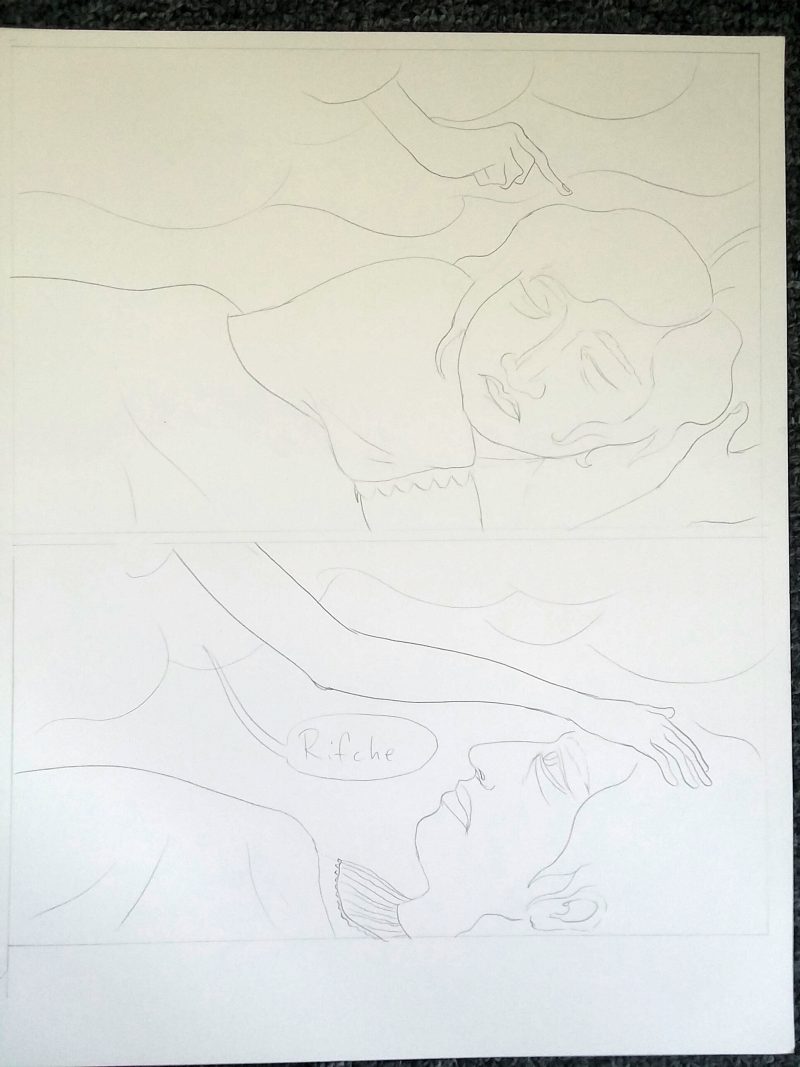
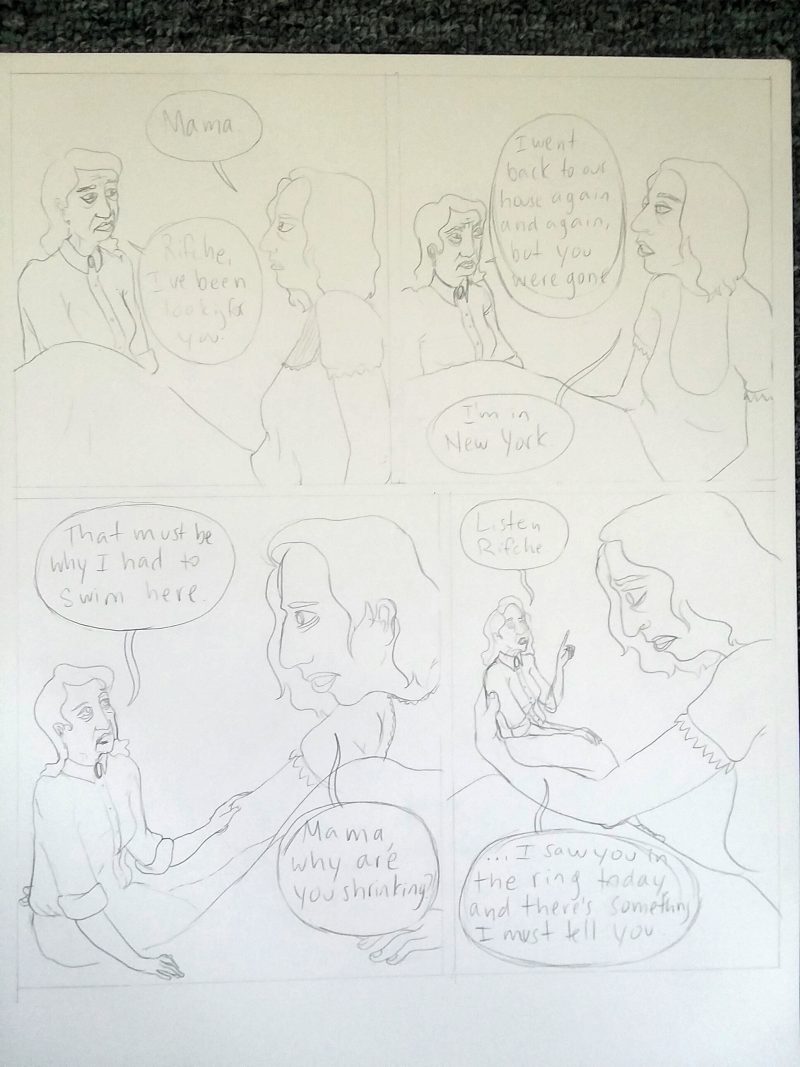
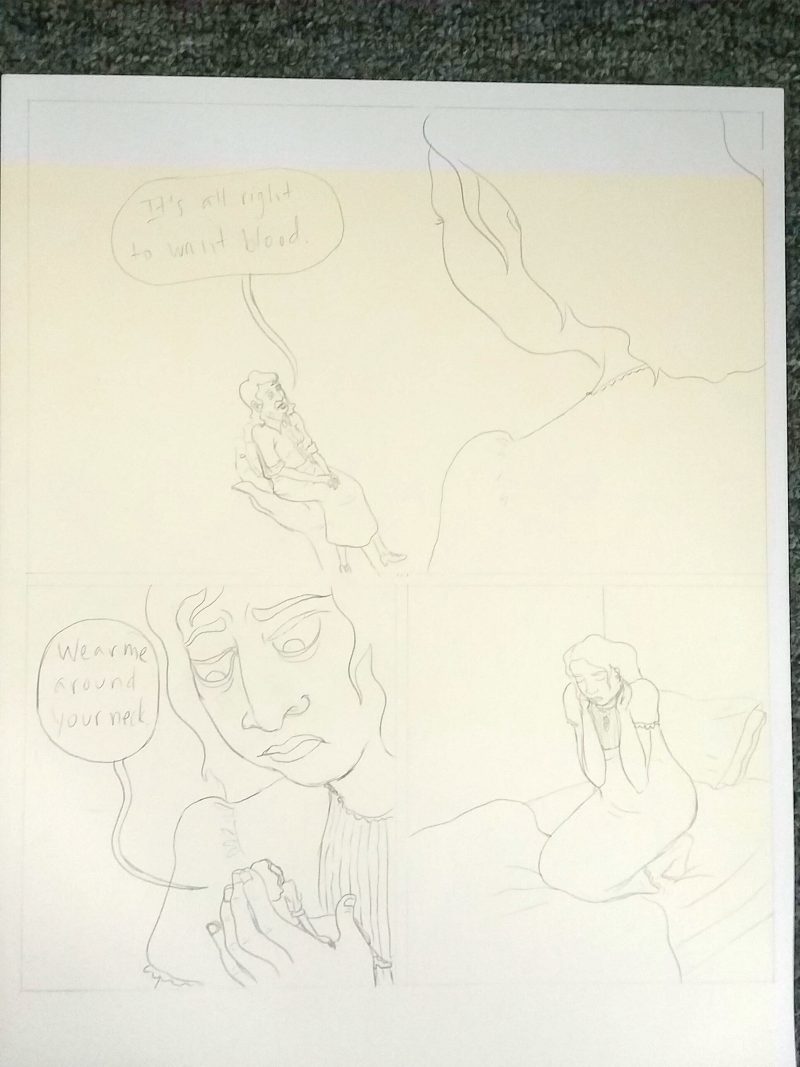
You have reached your article limit
Sign up for a digital subscription and continue reading all new issues, plus our entire archives, for just $1.50/month.
Already a subscriber? Sign in

